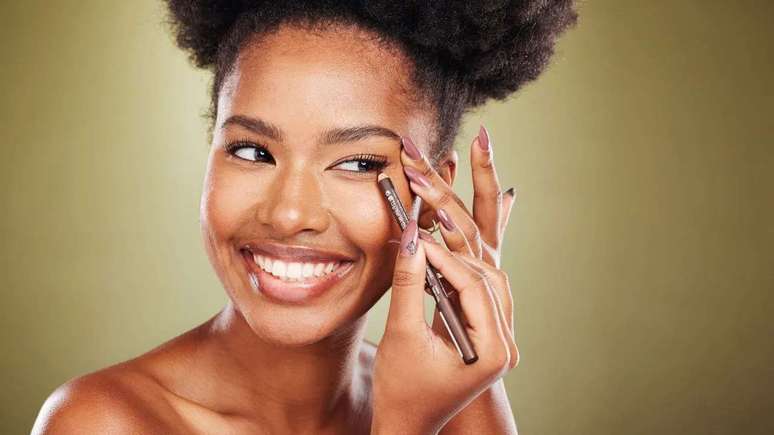Summary
The permanent blush procedure is a micropigmentation that deposits pink pigments on the skin, but experts warn the risks and recommend them on definitive makeup.
-
Frequent

Know the risks of making a permanent redness
-
Frequent

Rafael Zulu is 4 days in hospital after eating excess energy
-
Frequent

Pope Francis is stable, but goes to a critical condition, says the Vatican
Many creators of content on social networks such as Tiktok and Instagram have started to publish videos showing a permanent blush technique, in which a micropigmentation of pink pigment is performed usually on the cheeks.
“The goal is to color the cheeks, simulating the natural effect of the traditional blush. It is performed through micropigmentation, a technique that deposits pigments in the surface layer of the skin, providing a pink or long-term fishing tone “, explains the dermatologist Mackerley Bleixuvehl de Brito, by the Brazilian society of the dermatology-São Paulo Regional (SBD-DEP).
But the procedure is like a tattoo and SBD-resp stresses that the risks range from the change of color over time of regret and difficulty in removing pigments. In addition, the patient can develop scars and keloids, have an asymmetry or an artificial result and experience intense pain and prolonged inflammation.
“Before any procedure with a definitive or lasting result, you should reflect a lot. If the expectation is not achieved or regrets, the withdrawal is always a more painful option, with variable results and emotional impact. Depending on the type of pigment used during the abstinence process, there may still be a change of color “, says the dermatologist Sylvia Ypiranga, member of the SBD-Desp board of directors.
In the procedure, the pink pigments are deposited on the skin through a device called dermography, which performs microlesions on the skin to insert the pigment. “This aesthetic technique is similar to the micropigmentation of the eyebrow”, explains the dermatologist Raquel Monteiro de Morais, from SBD-Des.
People looking for this type of technique often want a permanently blocked cheek effect, providing a “healthy” appearance and the practicality of not having to frequently retouch the makeup. Doctors, however, advise permanent makeup: “The application of traditional blush is not so difficult, it can follow fashion and does not involve the risks of the definitive”, says Sylvia.
“It is essential to be careful before performing the permanent blush. The procedure must not be performed on skin that is not in full or without first ensuring that there are no pre -existing skin diseases. Individuals with sensitive skin, active inflammatory diseases (such as acne or rosacea) or who have healing problems can be aggravated these conditions after micropigmentation. In addition, there is the risk of reactivation of infectious diseases such as herpes, as well as the adverse reactions of the pigment, including the possibility of refusal as a foreign body, “says Raquel.
Patients in pregnancy and breastfeeding, with skin lesions in the region of the procedure and patients with personal training history of Cheloid scars should not perform the procedure.
Mackerley Bleixuvehl de Brito also stresses that if the patient decides to do before the procedure he should choose a qualified professional.
“Check if the professional has experience, good evaluations and uses disposable and sterilized materials. Anticoagulant and anti -inflammatory drugs such as aspirin and ibuprofen should be avoided, which can increase the risk of bleeding. It is very important to hydrate the skin as it helps to fix the pigment. And do not perform procedures such as chemical peel or laser at least 15 days before. After the procedure, sun exposure should be avoided, do not go to swimming pools, saunas and sea for 15 days, do not use makeup in the region for 07 days and do not manipulate the crusts that can form, “says Mackerley.
Finally, if the patient has to remove the permanent blush, SBD-VP recommends laser treatment as the most effective for removing tattoos. “The process of removing the laser tattoo works with selective Photothermolis, which breaks down the pigment. The number of sessions necessary depends on the characteristics of micropigmentation, such as color, size, depth and age. The procedure can cause discomfort, therefore local anesthetic is required. After application, we recommend the use of ice and sun cream bags “, concludes the SBD-resp director.
It inspires the transformation into the world of work, business, society. It is the creation of the compass, content and the connection agency.
Source: Terra
Ben Stock is a lifestyle journalist and author at Gossipify. He writes about topics such as health, wellness, travel, food and home decor. He provides practical advice and inspiration to improve well-being, keeps readers up to date with latest lifestyle news and trends, known for his engaging writing style, in-depth analysis and unique perspectives.








